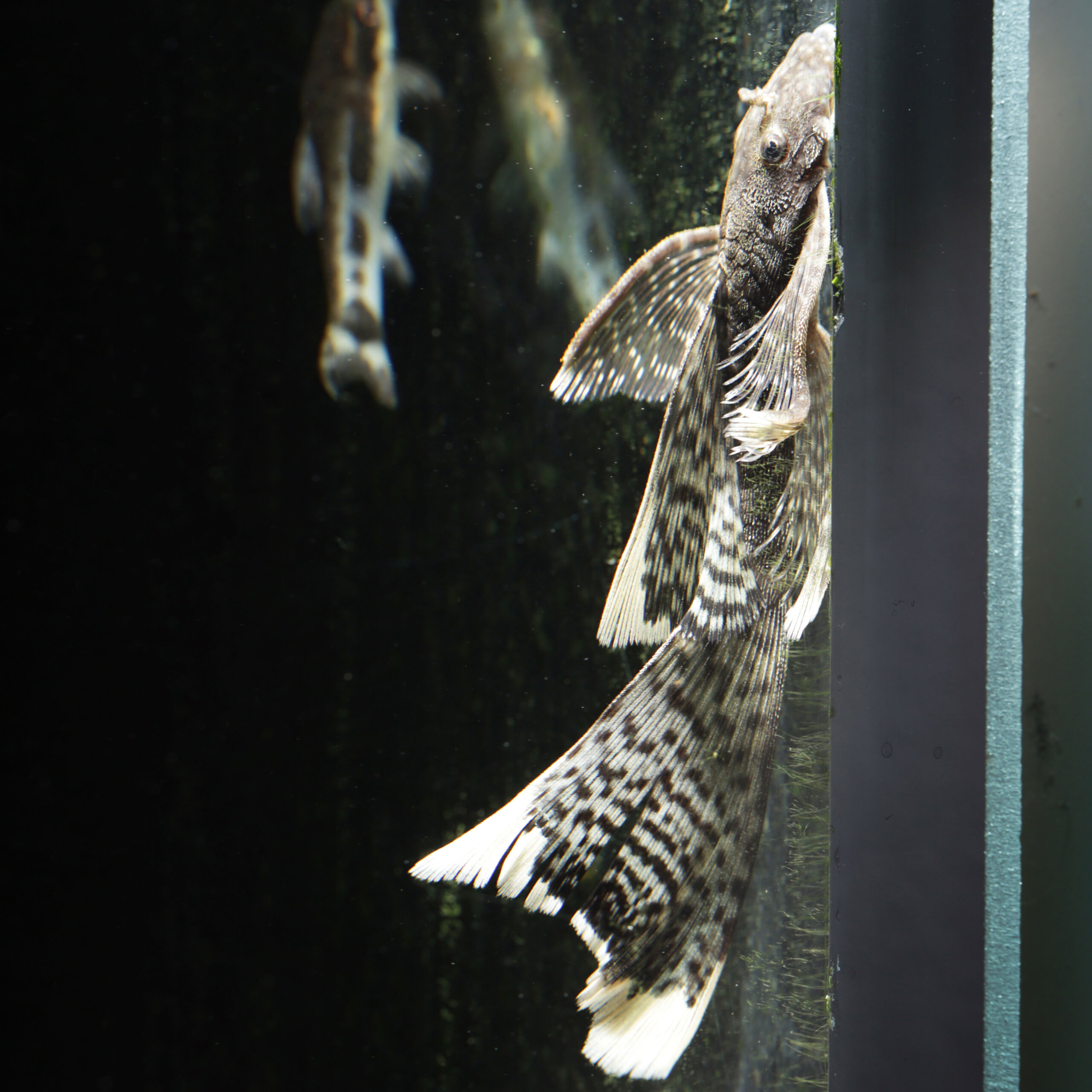Longfin Bristlenose Pleco
Ancistrus spec. Long Fin
The Longfin Bristlenose Pleco looks particularly elegant due to its long, veil-like fins.
- robust, easy-to-care fish species
- beautiful, veil-like extended fins
- likes to eat algae growth
1 in stock
 Delivery in a few working days
Delivery in a few working days
 Free shipping from €60 across Austria
Free shipping from €60 across Austria





Important data
Product description & details
The Longfin Bristlenose Pleco is a long-finned breed of the classic Bristlenose Pleco, which has its original habitat in the Amazon in South America and belongs to the family of Loricariidae. Its habitat is mainly fast-flowing, oxygen-rich waters. Except for the extended fins, the Longfin Bristlenose Pleco, which grows up to 14cm in size, does not differ from its wild relative and is just as easy to care for as it is. Characteristic and eponymous for Bristlenose Pleco are the bristle-like projections on the head and mouth, which are particularly pronounced in males.
Care in the aquarium
The Longfin Bristlenose Pleco’s aquarium should have a capacity of at least 100 liters and must be equipped with lots of wood roots, as the cellulose contained in it is needed for the Pleco’s digestion and it constantly scrapes it off. Dense edge planting, additional shelter options in the form of catfish caves or stone structures as well as light that is not too bright ensure the well-being of the fish. The Longfin Bristlenose Pleco does not have high demands when it comes to water hardness – it tolerates both soft and relatively hard water well. It is important that the water is clean and rich in oxygen and ideally has a moderate to slightly strong current. It is best kept in pairs, but single or harem keeping with a surplus of females is also possible without any problems, as this fish does not necessarily require the presence of other members of its species and does not form permanent pairs. The extremely peaceful Longfin Bristlenose Pleco can also be socialized very well with other peaceful species.
Feeding
Typical of fish of the genus Ancistrus, the Longfin Bristlenose Pleco is a limnivore that feeds on algae and biofilm, but is not a pure vegetarian. If your tank does not have enough green algae cushion, additional food must be supplied in the form of food tablets, for example. Sinking live and frozen food, such as shineworms or Tubifex, can also be given occasionally.
Sexual characteristics and breeding
From a body size of around 5cm, the genders of the Longfin Bristlenose Pleco can be distinguished. At this point, the males develop their “antennas”, which are significantly longer than those of the females, in which these extensions are only small stubs or can sometimes even be completely missing. Breeding Ancistrus in an aquarium is not difficult. This species is a cave breeder whose clutches can consist of up to 200 eggs. The clutch is guarded by the male until the offspring hatch. This occurs after about 5 days and after about 5 more days, when the yolk sac has been completely consumed, the young fish leave the breeding cavity to search for food on their own.





